admin
Staff member
Supercharged Sport Touring: The 2021 Kawasaki Ninja H2 SX+ SE
Supercharged Sport Touring: The 2021 Kawasaki Ninja H2 SX+ SE
Contents
It just makes sense. When you are the Japanese brand with a 2021 lineup full of performance bikes, of course you are the manufacturer with the most ferocious sport-touring bike available!
Being part of the Japanese-made Ninja family provides access to the best of the best parts choices. Like the others in the 2021 Kawasaki H2 family, the SX+ SE shares a version of the engine, trellis frame, suspension, and braking systems. At first glance, they all appear identical, but Kawasaki Motorcycles has made small changes that turn the H2 SX+ SE into a very luxurious performance touring platform.
Powered by a supercharged, 998cc, liquid-cooled, 4-stroke DOHC 16-valve In-line four-cylinder engine, making 210.0 HP (157.0 kW) @ 11500 RPM, and 114.7 Nm (84.6 lb-ft) @ 11,500 rpm of torque, this Kawasaki provides ample thrust to carry pilot and passenger at very illegal speeds.
The trellis frame sits a bit taller and lengths the wheelbase to 1,480 mm (58.3 in), improving the 2-up capabilities, and space for a nicer pillion pad. The overall weight of the H2 SX+ SE seems a bit rotund at 262 kg (578 lb), but all riding impressions share how it feels so well balanced and nimble on its Bridgestone Battlax tires.
The braking system is another piece of high tech Kawasaki provides with the Brembo Stylema calipers, and the KIBS (Kawasaki Intelligent Anti-lock Brake System). This is a welcome addition for consistent, powerful stops when you are at highway speeds with the option 28-liter quick-release panniers filled for the weekend.
Overall the H2 SX+ SE is unchanged from 2020. It remains a supercharged Sport Touring missile. Yes, it has a lofty price tag, but damn you get a lot of kit for the dollars.
The 2021 Kawasaki Ninja H2 SX+ SE starts at $25,500 USD / $29,199 CAD
On this page: we’ve curated specs, features, news, photos/videos, etc. so you can read up on the new 2021 Kawasaki Ninja H2 SX+ SE in one place.
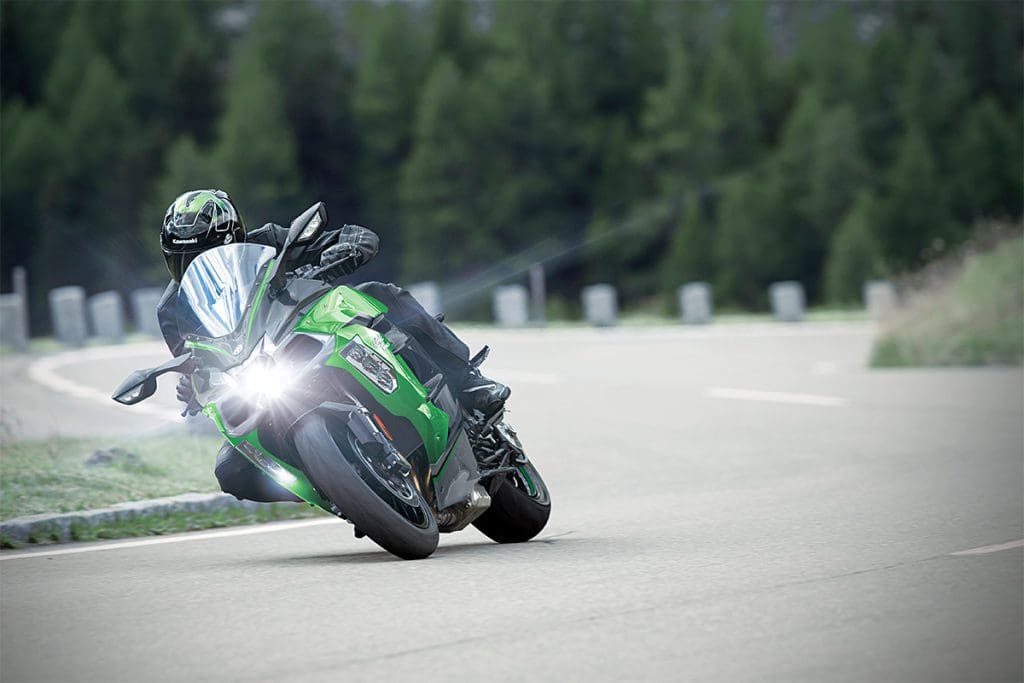
Model Overview
Model Overview
General Info
General Info
- Price: $25,500 USD / $29,199 CAD
- Key Features:
- Electronic Cruise Control
- Kawasaki Corner Management Function (KCMF)
- Kawasaki Quick Shifter (KQS)
- Kawasaki Launch Control Mode (KLCM)
- Kawasaki Electronic Control Suspension (KECS)
- Touring Capability
Main Specs
- Engine: 998cc Liquid-cooled, 4-stroke, In-Line Four, DOHC, 16-valve
- Power: 228.0 HP (166.4 kW) @ 11500 RPM
- Torque: 141.7 Nm (104.9 ft.lbs) @ 11000 RPM
- Wet Weight: 524.8 lbs (238.1 kg)
- Seat Height: 32.5 inches (825.5 mm) at the lowest point
Competitors
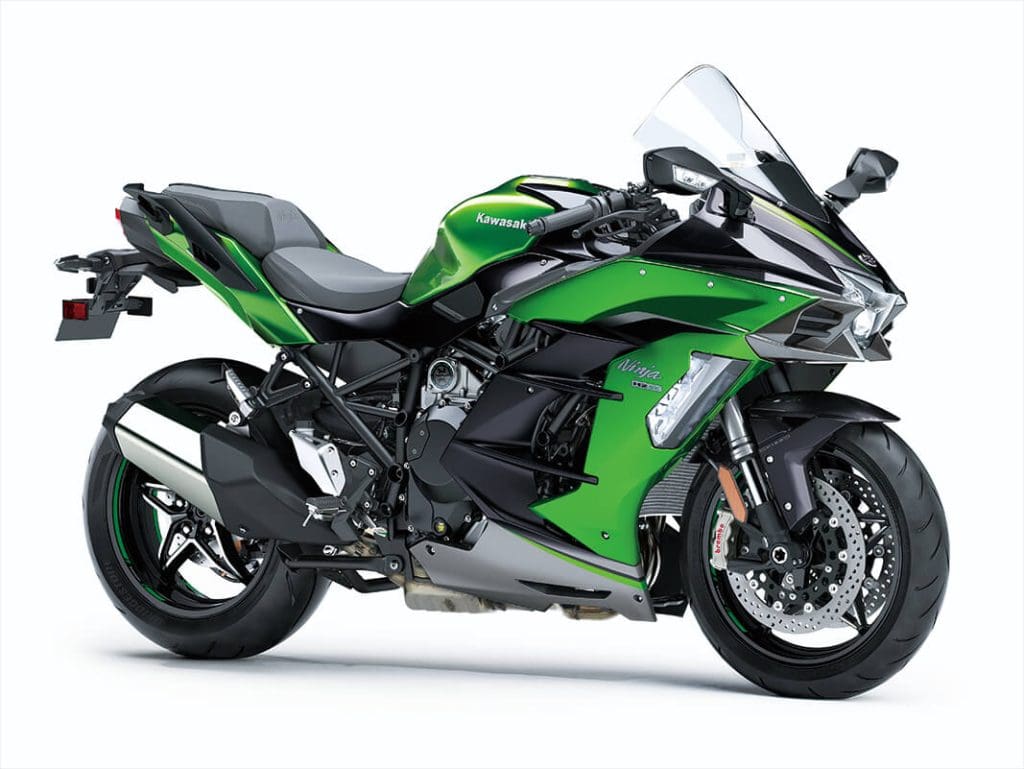
2021 Kawasaki Ninja H2 SX+ SE Specifications
2021 Kawasaki Ninja H2 SX+ SE Specifications
ENGINE | |
| Engine | 998cc, liquid-cooled, 4-stroke, DOHC 16-valve in-line four |
| Power | 228 Hp |
| Bore x Stroke | 76.0 x 55.0mm |
| Compression Ratio | 11.2:1 |
| Fuel System | Fuel injection: ø40 mm x 4 with dual injection |
| Starter | Electric |
| Lubrication | Forced lubrication, wet sump with oil cooler |
DRIVETRAIN | |
| Clutch | Wet multi-disc, manual |
| Transmission | 6-speed, return, dog-ring |
| Final Drive | Chain |
CHASSIS | |
| Suspension Front | ø43 mm inverted fork with KECS-controlled compression and rebound damping, manual spring preload adjustability, and top-out springs / 120 mm (4.7 in) |
| Suspension Rear | New Uni Trak, BFRC lite gas-charged shock with piggyback reservoir, KECS-controlled compression and rebound damping, and electronic spring preload adjustability / 139 mm (5.5 in) |
| Brakes Front | Dual semi-floating ø320 mm discs with radial-mount, Brembo Stylema monobloc, opposed 4-piston calipers |
| Brakes Rear | ø250 mm disc with 2-piston caliper |
| Tires Front | 120/70ZR17M/C (58W) |
| Tires Rear | 190/55ZR17M/C (75W) |
| Fuel Tank Capacity | 19 litres |
| Color | Emerald Blazed Green / Metallic Diablo Black / Metallic Graphite Gray |
ELECTRICAL | |
| Ignition | Digital |
| Spark Plugs | |
| Headlight | LED |
| Tail Light | LED |
DIMENSIONS | |
| Overall Length | 84.1 in |
| Overall Width | 30.5 in |
| Overall Height | 49.6 in |
| Wheelbase | 1,480 mm (58.3 in) |
| Ground Clearance | 130 mm (5.1 in) |
| Seat Height | 835 mm (32.9 in) |
| Curb Weight | 262 kg (578 lb) |
WARRANTY | |
| Warranty | 12 months |
| Kawasaki Protection Plus | 12 / 24 / 36 / 48 months |
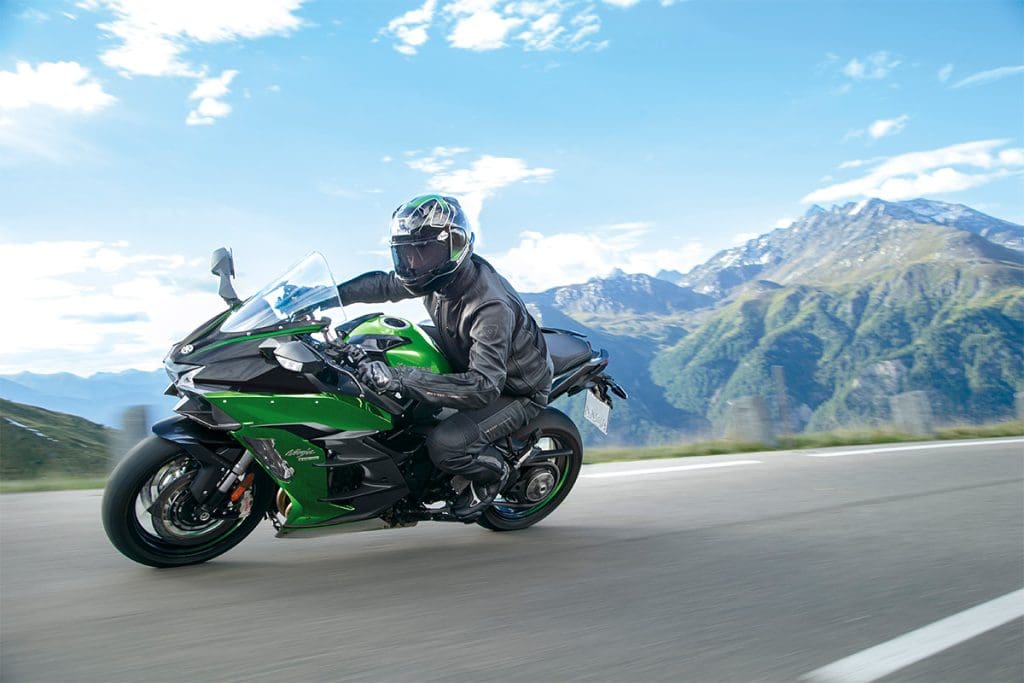
2021 Kawasaki Ninja H2 SX+ SE Features
2021 Kawasaki Ninja H2 SX+ SE Features
Assist & Slipper Clutch
Based on feedback from racing activities, the Assist & Slipper Clutch uses two types of cams (an assist cam and a slipper cam) to either drive the clutch hub and operating plate together or apart.
Under normal operation, the assist cam functions as a self-servo mechanism, pulling the clutch hub and operating plate together to compress the clutch plates. This allows the total clutch spring load to be reduced, resulting in a lighter clutch lever feel when operating the clutch.
When excessive engine braking occurs – as a result of quick downshifts (or an accidental downshift) – the slipper cam comes into play, forcing the clutch hub and operating plate apart. This relieves pressure on the clutch plates to reduce back-torque and helps prevent the rear tire from hopping and skidding. This race-style function is particularly useful when sport or track riding.
Economical Riding Indicator
Using high-precision electronic control for engine management, Kawasaki models can achieve a high level of fuel efficiency. However, fuel consumption is greatly affected by throttle use, gear selection, and other elements under the rider’s control. The Economical Riding Indicator is a function that indicates when current riding conditions are consuming a low amount of fuel. The system continuously monitors fuel consumption, regardless of vehicle speed, engine speed, throttle position and other riding conditions. When fuel consumption is low for a given speed (i.e. fuel efficiency is high), an “ECO” mark appears on the instrument panel’s LCD screen. By riding so that the “ECO” mark remains on, fuel consumption can be reduced.While effective vehicle speed and engine speed may vary by model, paying attention to conditions that cause the “ECO” mark to appear can help riders improve their fuel efficiency – a handy way to increase cruising range. Further, keeping fuel consumption low also helps minimize negative impact on the environment.
Electronic Throttle Valves
Kawasaki’s fully electronic throttle actuation system enables the ECU to control the volume of both the fuel (via fuel injectors) and the air (via throttle valves) delivered to the engine. Ideal fuel injection and throttle valve position results in smooth, natural engine response and the ideal engine output. The system also makes a significant contribution to reduced emissions.Electronic throttle valves also enable more precise control of electronic engine management systems like S-KTRC and KTRC, and allow the implementation of electronic systems like KLCM, Kawasaki Engine Brake Control, and Electronic Cruise Control.
Kawasaki Engine Brake Control
The Kawasaki Engine Brake Control system allows riders to select the amount of engine braking they prefer. When the system is activated, the engine braking effect is reduced, providing less interference when riding on the track.KLCM (Kawasaki Launch Control Mode)
Designed to assist riders by optimizing acceleration from a stop, KLCM electronically manages engine output to minimize wheel spin when moving off. With the clutch lever pulled in and the system activated, engine speed is limited to a determined speed while the rider holds the throttle open. Once the rider releases the clutch lever to engage the clutch, engine speed is allowed to increase, but power is regulated to minimize wheel spin and help keep the front wheel on the ground. The system disengages automatically once a predetermined speed has been reached, or when the rider shifts into third gear. Depending on the model, riders can choose from multiple modes, each offering a progressively greater level of intrusion.KCMF (Kawasaki Cornering Management Function)
Using the latest evolution of Kawasaki’s advanced modeling software and feedback from a compact IMU (Inertial Measurement Unit) that gives an even clearer real-time picture of chassis orientation, KCMF monitors engine and chassis parameters throughout the corner – from entry, through the apex, to corner exit – modulating brake force and engine power to facilitate smooth transition from acceleration to braking and back again, and to assist riders in tracing their intended line through the corner. The systems that KCMF oversees vary by model, but may include:• S-KTRC/KTRC (including traction management and wheel lift management)
• KLCM (including traction management and wheel lift management)
– Designed to optimize acceleration from a stop
• KIBS (including pitching management and corner braking management)
• Kawasaki Engine Brake Control
KTRC (Kawasaki Traction Control)
KTRC, Kawasaki’s advanced traction control system provides both enhanced sport riding performance and the peace of mind to negotiate slippery surfaces with confidence. Multiple rider-selectable modes (the number of modes varies by model) offer progressively greater levels of intrusion to suit the riding situation and rider preference.Less intrusive modes maintain optimum traction during cornering. Designed with sport riding in mind, they facilitate acceleration out of corners by maximizing forward drive from the rear wheel. And because Kawasaki’s sophisticated software bases its dynamic analysis on the chassis’ orientation relative to the track surface (rather than relative to a horizontal plane), it is able to take into account corner camber, gradient, etc., and adapt accordingly.
In the more intrusive modes (and for some models, in any mode), when excessive wheel spin is detected, engine output is reduced to allow grip to be regained, effectively enabling riders to negotiate both short, slippery patches (train tracks or manhole covers) and extended stretches of bad roads (wet pavement, cobblestone, gravel) with confidence.
Models equipped with IMU incorporate chassis-orientation feedback to offer even more precise management.
Smartphone Connectivity
Clever technology enables riders to connect to their motorcycle wirelessly. Using the smartphone application “RIDEOLOGY THE APP,” a number of instrument functions can be accessed, contributing to an enhanced motorcycling experience. Vehicle information (such as the odometer, fuel gauge, maintenance schedule, etc) can be viewed on the smartphone. Riding logs (varies by model, but may include GPS route, gear position, rpm, and other information) can be viewed on the smartphone. When connected, telephone (call, mail) notices are displayed on the instrument panel. Riders can also make changes to their motorcycle’s instrument display settings (preferred units, clock and date setting, etc) via the smartphone. And on certain models, it is even possible to check and adjust vehicle settings (such as Rider Mode, electronic rider support features, and payload settings) using the smartphone.Supercharged Engine
Drawing on the know-how and technology possessed by the Kawasaki Heavy Industries, Ltd. (KHI), Kawasaki’s supercharged engine delivers high engine output while maintaining a compact design. The key to achieving this incredible performance lies in the engine’s supercharger – a motorcycle-specific unit designed completely in-house with technology from the Kawasaki Gas Turbine & Machinery Company, Aerospace Company and Corporate Technology Division.One of the greatest benefits of designing the supercharger in-house and tailoring its design to match the engine’s characteristics was that engineers were able to achieve high-efficiency operation over a wide range of conditions – something that would not have been possible by simply dropping in or trying to adapt an aftermarket automotive supercharger.
The importance of high efficiency in a supercharger is that, as the air is compressed, power-robbing heat gain is minimal. And while many superchargers are able to offer high-efficiency operation in a very limited range of conditions, the Kawasaki supercharger offers high efficiency over a wide range of pressure ratios and flow rates – meaning over a wide range of engine speeds and vehicle speeds. This wide range of efficient operation (similar to having a wide power band) easily translates to strong acceleration. The supercharger’s high efficiency and minimal heat gain also meant that an intercooler was unnecessary, greatly saving weight and space, and enabling the engine’s compact design.
ELECTRONIC CRUISE CONTROL
Electronic Cruise Control allows a desired speed (engine rpm) to be maintained with the simple press of a button. Once activated, the rider does not have to constantly apply the throttle. This reduces stress on the right hand when traveling long distances, enabling relaxed cruising and contributing to a high level of riding comfort.POWER MODES
Models equipped with multiple Power Modes offer riders an easily selectable choice of engine power delivery to suit riding conditions or preference. In addition to Full Power mode, one (Low) or two (Middle, Low) alternate mode(s) in which maximum power is limited and throttle response is milder are provided.KQS (KAWASAKI QUICK SHIFTER)
Designed to help riders maximize their acceleration on the track by enabling clutchless upshifts with the throttle fully open, KQS detects that the shift lever has been actuated and sends a signal to the ECU to cut ignition so that the next gear can be engaged without having to use the clutch. On models that offer clutchless downshifts, during deceleration the system automatically controls engine speed so that the next lower gear can be selected without operating the clutch.2021 Kawasaki Ninja H2 SX+ SE Photos
2021 Kawasaki Ninja H2 SX+ SE Photos

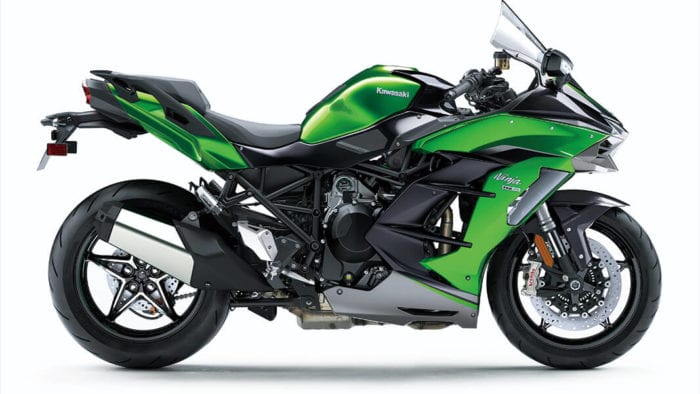

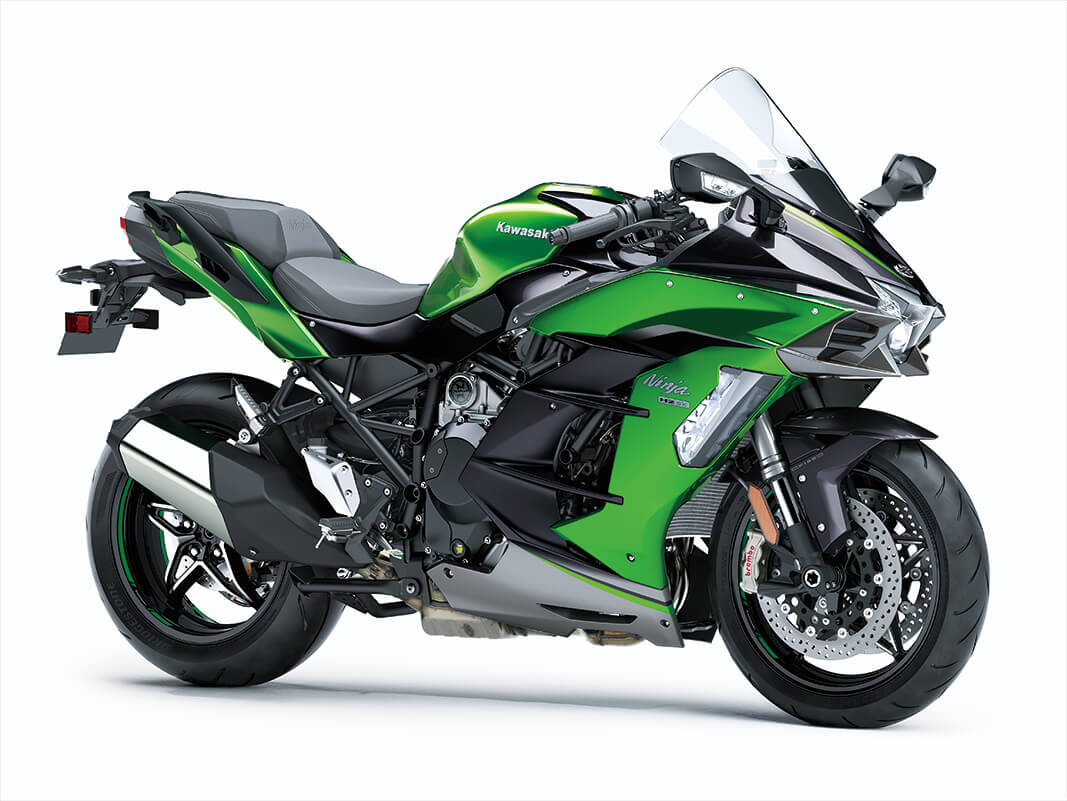
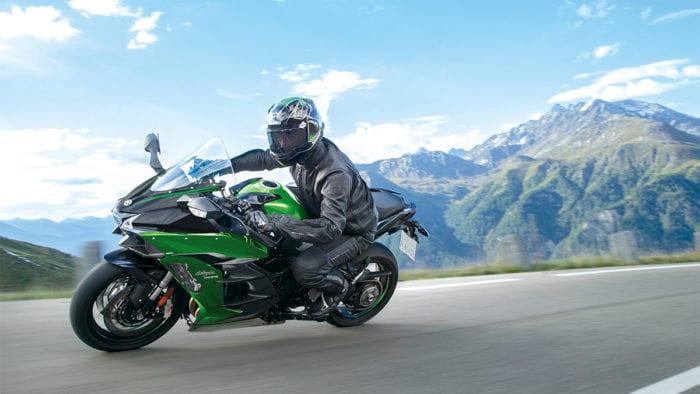
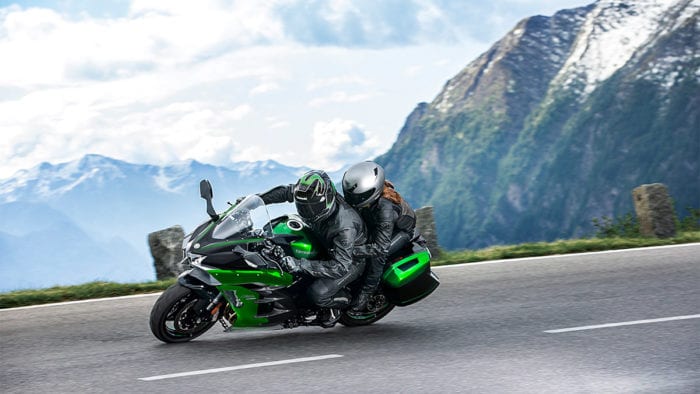

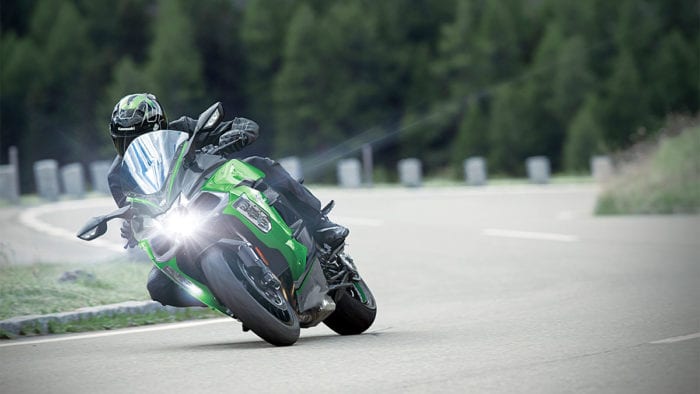
2021 Kawasaki Ninja H2 SX+ SE Videos
2021 Kawasaki Ninja H2 SX+ SE Videos
Links
Links
Kawasaki Official Websites
Social Media Links
The post 2021 Kawasaki Ninja H2 SX+ SE [Model Overview] appeared first on webBikeWorld.
Continue reading...


